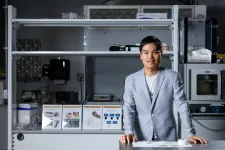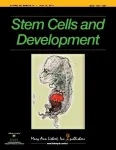A novel method for the rapid repair of peripheral nerve injuries
Bar-Ilan University researchers have developed nerve guidance conduits filled with smart gel that accelerate regeneration of torn nerve fibers
2021-07-21
(Press-News.org) Each year, hundreds of thousands of people worldwide suffer from peripheral nerve injuries, which often leave them with long-term disabilities. The peripheral nervous system is analogous to the circulatory system; a network of vessels that reaches all parts of the body, but instead of blood flowing through vessels, electrical signals propagate information through thin fibers called axons, which are engulfed within nerve trunks. These nerve trunks are the communication network relaying information from all parts of the body to the brain, coordinating activity, and generating motor and sensory function. If one of the nerve trunks is damaged or torn - a common condition in limb injuries - a patient can experience pain, paralysis and even a life-long disability.
In such situations, surgical intervention is necessary to repair the damaged nerve. The standard treatments are direct suturing of detached nerves or, in cases where the gap formed in the nerve trunk is large, surgeons transfer an intact nerve trunk from the patient's leg and implant it at the site of the injury, thus creating damage in another area (i.e., the leg). Today, there are methods to rejoin nerve trunks to allow the axons to regrow and restore motor and sensory function. One such method is by implanting a synthetic hollow nerve conduit aimed at bridging the gap and allowing the nerve to heal without secondary damage to the patient.
One of the main problems preventing optimal regeneration is that axons within severed nerves have difficulty regenerating and reaching their target. This may be attributed in part to misguided axons that sprout in multiple directions, decreasing probability to reach their target organs. "They need orienting cues to help them," explains Prof. Orit Shefi, of Bar-Ilan University's Kofkin Faculty of Engineering, Institute for Nanotechnology and Advanced Materials, and Gonda (Goldschmied) Multidisciplinary Brain Research Center. Dr. Merav Antman-Passig, a researcher in her lab, adds: "These guiding instructions need to remain in the body for an extended time, since axons grow fairly slowly."
A technique developed by the research team of Prof. Shefi's laboratory, led by Dr. Antman-Passig and Dr. Jonathan Giron, is used to fill a nerve conduit with gel containing a number of physical and chemical components that promote and align axon regrowth. Their technique was recently published in Advanced Functional Materials.
The researchers filled hollow nerve conduits with engineered aligned collagen gels. In the body, aligned collagen fibers help axon pathfinding, but, in the hollow nerve guides available today, the aligned collagen fibers are absent. The aligned collagen gel acts as a scaffold for axons and directs their growth. In addition, the conduits contain a substance called NGF (nerve growth factor) which, as its name implies, is essential for the growth of the nervous system. "Imagine that we implanted guiding cues in the gel, which are the aligned collagen fibers, and that these guiding cues also have a treat for the growing axons," explains Dr. Antman-Passig "like bait neatly scattered for the growing axons." Prof. Shefi adds: "An axon that reaches the gel follows these cues and finds the right direction more easily. In fact, the novel system combines several techniques for nerve regeneration. Axons like to grow toward these markers that can be left for them, like collagen scaffolding and NGF. The novelty of our method is in the engineering of an organized tissue-like gel that contains components that help restore the nerves, and especially in extending the duration of activity of the gel in the body. If collagen and NGF are simply added in hollow nerve conduits, just like real bait, different cells consume them and actually break them down. After a short time, the growing axons do not have these road signs. In the method we developed, we extended the time that these factors are accessible to axons during regeneration. We did this by incorporating NGF-coated magnetic particles that we arranged into the correct structure via a magnetic alignment strategy. This also creates an arrangement of the particles and collagen."
After characterizing the gel components, the researchers implanted them in nerve conduits and examined the direction of their growth and the platform's efficacy. The researchers measured the direction of the cell growth and found that with the help of the gel combining aligned collagen and NGF- coated particles, they were able to direct and enhance their growth. Subsequently, they examined the efficacy of the conduit in the rehabilitation of rats with peripheral nerve injury at the sciatic nerve, which prevented them from walking properly. The number of axons that penetrated the innovative gel-filled tube and successfully crossed the injured area was greater compared to the empty tube, and accordingly the restoration of nerve tissue was the highest. The researchers showed that with the implantation of the tubes and the use of the engineered collagen gel, the functional motor restoration was highest, in comparison to the use of other types of conduits and compared to conduits with gel that was not enriched.
The researchers are now exploring commercialization options and hope that will help functional recovery and accelerate nerve repair following injury.
INFORMATION:
ELSE PRESS RELEASES FROM THIS DATE:
2021-07-21
A far-reaching new study of the life-cycle greenhouse gas (GHG) emissions from passenger cars, including SUVs, draws sharp and meticulous distinctions between the climate impacts of battery and fuel cell electric vehicles on one hand and combustion vehicles on the other.
The detailed findings can be summarized straightforwardly. Only battery electric vehicles (BEVs) and fuel cell electric vehicles (FCEVs) powered by renewable electricity can achieve the kind of deep reductions in GHG emissions from transportation that comport with the Paris Agreement's goal of ...
2021-07-21
URBANA, Ill. - No one wants to live near a toxic plant. Toxic-releasing facilities such as paper, pulp, and other manufacturing plants negatively affect human health, environmental quality, and property values. And communities with lower income and educational attainment are more likely to house such facilities.
Since mandatory reporting about toxic facilities became publicly available in 1990, affected communities have increasingly expressed concern through the media, and engaged in targeted collective action and "toxic torts" lawsuits for health and environmental damages.
New ...
2021-07-21
A new wearable brain-machine interface (BMI) system could improve the quality of life for people with motor dysfunction or paralysis, even those struggling with locked-in syndrome - when a person is fully conscious but unable to move or communicate.
A multi-institutional, international team of researchers led by the lab of Woon-Hong Yeo at the Georgia Institute of Technology combined wireless soft scalp electronics and virtual reality in a BMI system that allows the user to imagine an action and wirelessly control a wheelchair or robotic arm.
The team, which included researchers from the University of Kent (United Kingdom) and Yonsei University (Republic of Korea), describes the new motor imagery-based BMI system this month ...
2021-07-21
During the height of the pandemic, some hospitals were overwhelmed with patients seeking treatment for COVID-19. This situation could happen again during future outbreaks, especially with SARS-CoV-2 variants of concern on the rise. Now, researchers reporting in ACS' Analytical Chemistry have developed a blood test to predict which people infected with COVID-19 are most likely to experience serious symptoms, which could help health care workers prioritize patients for hospitalization and intensive care.
Although many people who contract COVID-19 have either no symptoms or mild ones, some require intensive care for pneumonia with acute respiratory distress syndrome. Risk factors for severe disease include older age, ...
2021-07-21
Since antiretroviral therapy (ART) for HIV was introduced in 1996, AIDS-related morbidity and mortality has declined significantly. People living with HIV are now expected to live nearly as long as people without HIV. Despite these advances, those living with HIV often report poor well-being and health-related quality of life.
To guide stakeholders in improving health system responses to achieve the best possible long-term health outcomes for people living with HIV, a global multidisciplinary group of HIV experts led by CUNY SPH Senior Scholar Jeffrey Lazarus and including Distinguished Professor Denis Nash and Associate Professor Diana Romero developed a consensus statement identifying the key issues health systems must address in order to move beyond the longtime ...
2021-07-21
Activism and the Clinical Ethicist
Christopher Meyers
Although clinical ethics scholarship and practice have largely avoided assuming an activist stance, the many health care crises of the last 18 months motivated a distinct change: activist language has permeated conversations over such issues as the impact of triage policies on persons with disabilities and of color, and how the health care system has historically failed African Americans. "This activism is, to my mind, an overdue and welcome turn, and my goal here is to defend it--generally and with particular ...
2021-07-21
ALBUQUERQUE, N.M. -- Researchers at Sandia National Laboratories have designed a new class of molten sodium batteries for grid-scale energy storage. The new battery design was shared in a paper published today in the scientific journal Cell Reports Physical Science.
Molten sodium batteries have been used for many years to store energy from renewable sources, such as solar panels and wind turbines. However, commercially available molten sodium batteries, called sodium-sulfur batteries, typically operate at 520-660 degrees Fahrenheit. Sandia's new molten sodium-iodide battery operates at a much cooler 230 degrees Fahrenheit instead.
"We've been working to bring the operating temperature of molten sodium batteries down as low as physically possible," ...
2021-07-21
Scientists have developed a new way to model and map the health of coral reef ecosystems using data collected on the Khaled bin Sultan Living Oceans Foundation's Global Reef Expedition. This innovative method, presented today at the International Coral Reef Symposium (ICRS), can determine which natural and anthropogenic factors are most likely to lead to persistently vibrant coral and fish communities. Their findings can help scientists identify the reefs most likely to survive in a changing world.
The new models are a first step in being able to produce maps of global coral reef resilience.
To create these models, scientist Anna Bakker needed a lot of data on coral reefs from ...
2021-07-21
Drugs must be safe not just for the patients; in the case of pregnant patients, drugs must also be safe for the unborn children still in the womb. Therefore, at an early stage in the development of new medicines, candidate substances are tested in the Petri dish on embryonic stem cells from mouse cell lines. This is to avoid that an embryo-damaging effect would only be noticed at a later stage during tests with pregnant mice.
However, these cell culture tests are a highly simplified version of what takes place in the uterus. Researchers just add the test material to a culture of embryonic stem cells in a Petri dish, and can identify substances that have a direct adverse effect on embryonic cells. By contrast, in the body of a pregnant woman, active pharmaceutical ...
2021-07-21
New Rochelle, NY, July 21, 2021-- Evaluating the efficacy of novel therapies requires the ability to monitor wound progression accurately and reproducibly over time. Researchers have proposed a new scoring system for wound healing in mice based on parameters in each phase of healing, as described in an article in the peer-reviewed journal Stem Cells and Development. Click here to read the article for free through August 21, 2021.
The parameters include re-epithelization, epithelial thickness index, keratinization, granulation tissue thickness, remodeling, and the scar elevation index. The parameters can be assessed using either Hematoxylin & Eosin or ...
LAST 30 PRESS RELEASES:
[Press-News.org] A novel method for the rapid repair of peripheral nerve injuries
Bar-Ilan University researchers have developed nerve guidance conduits filled with smart gel that accelerate regeneration of torn nerve fibers




